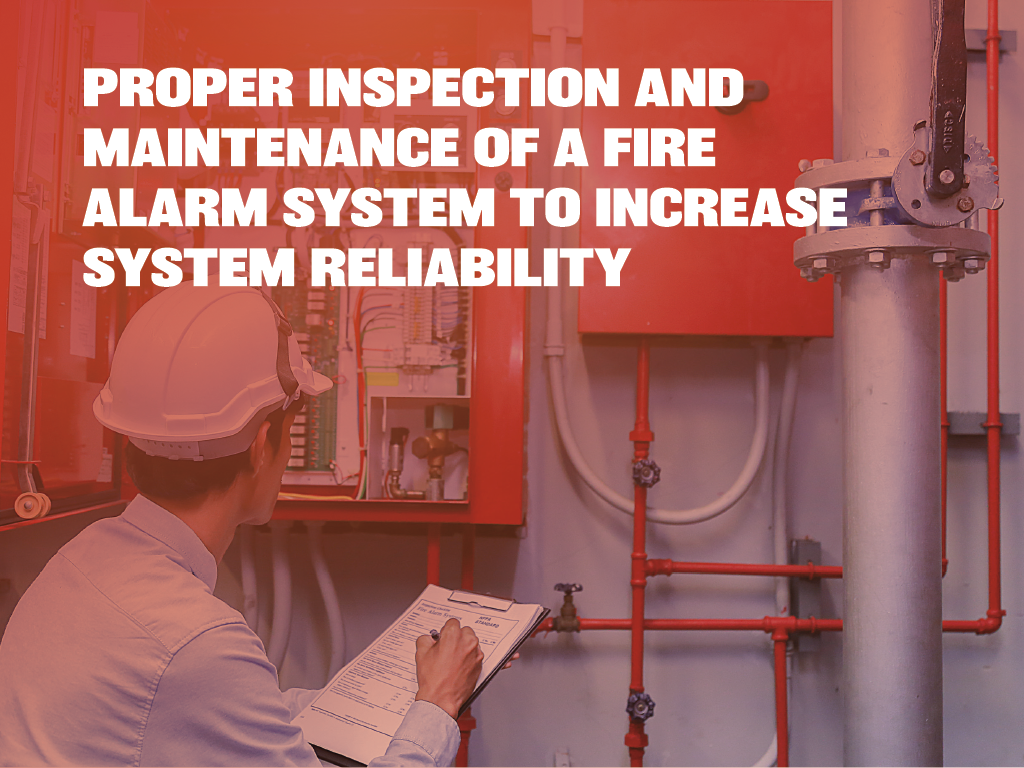Proper Inspection & Maintenance of a Fire Alarm System to Increase System Reliability

A seminar on fire alarm systems and the importance of maintenance for them will be presented at this year’s Electronic Security Expo, ESX. Fire alarm systems serve as the cornerstone of safeguarding lives and properties. One of the key aspects of increasing the reliability of these systems is to make sure they are properly inspected and maintained. Fire alarm systems, like many other important things in our world, rely on periodic inspection and maintenance. Similar to a vehicle, proper servicing by qualified personnel is key to ensuring the system will detect a fire or smoke and alert the occupants, first responders and activate any interfaces like elevator recall or fan shutdown as required by the life safety plan.
THE BEST PLAN IS A TEST PLAN
One of the first steps to creating a proper inspection and maintenance program is to develop a test plan. NFPA 72, The National Fire and Signaling Code’s 2022 edition, states that a test plan shall be developed to clearly establish the scope of the testing for the fire alarm system. Further, the test plan and the results shall be documented with the testing records. A documented test plan is more than a contract between an installer/maintainer and a building owner. A contract typically identifies that a system will be tested, documentation will be created, and state if parts are covered or are additional etc. But typically, a contract does not provide a scope of work identifying all the fire alarm control unit and remote cabinets, devices, and appliances. A test plan is required to clearly establish what the scope of work entails, and if the system is to be inspected twice a year and fifty percent of the system is inspected and tested at each interval. The plan should also include exactly what will be tested and, more importantly, how it will be tested. For example, will duct smoke detectors be tested with actual smoke and will they be tested with a manometer to verify proper airflow. A good test plan can help a building owner fully understand what they are agreeing to and how their system will be inspected and maintained.
CLEARLY DEFINE YOUR SCOPE OF SERVICES
As with a test plan to ensure the owner understands what they should expect from a service provider, it is equally important for the service provider to understand what they are offering. Some common mistakes I see in the industry are service providers not limiting their scope of work. Instead of stating that you will be inspecting the fire alarm system to NFPA 72, you should clarify exactly what within NFPA 72 you are offering and committing to. For example, a contract should state that a service provider will test and inspect the fire alarm system per NFPA 72, 2022 edition as outlined in Chapter 14. A service provider should not leave it at inspect and test per NFPA 72. This opens up the possibility of a building owner thinking you will be conducting a system design verification because that is what is covered in other chapters of NFPA 72. Instead, limit your scope so it is clear you are only testing and inspecting as outlined in chapter 14 for Inspection, Testing, and Maintenance.
When a system is inspected, it is also necessary to perform some maintenance. An example of this would be to clean smoke detectors. The smoke detector is in the environment of the facility and subject to daily air movement with can cause the detector to get dirt, dust etc. inside the chamber. Periodic cleaning of the smoke detector is a good idea to ensure that the device will be able to detect smoke when needed to. Another commonly overlooked item is battery testing.
BATTERY TESTING
The batteries in a fire alarm system have to be properly tested as outlined in NFPA 72 to verify they are charging correctly, have the capacity required to operate the system during a power failure and verify the battery temperature compared to the battery enclosure. If the capacity, voltage, or above normal heat is observed from the batteries they need to be replaced. A new change to NFPA 72 for 2022 is that rechargeable batteries for the secondary power supply used in control units, devices, and accessories need to be listed or component recognized by a nationally recognized testing laboratory. The proper battery is important for the power supplies and system to function correctly.
PREPARING REQUIRED INSPECTION REPORTS
When a test is completed on a system, a record of the inspection needs to be provided to the building owner. NFPA 72 requires certain information to be part of the report but does not mandate the format of the report, only the content. Reporting needs to include results from every device and appliance and must include the location and condition. A report cannot state “thirty horn strobes inspected, all functioned properly. NFPA 72 requires each device and appliance to be listed separately with the location and condition. A summary report like “tested all sensors and they passed” is not sufficient.
Inspections can only be performed by qualified service and testing personnel. NFPA 72 requires inspections to be performed by personnel who have developed competence through training and experience. A service provider should be ready to provide the qualifications to a building owner and a building owner should request the qualifications for the personnel who will be performing their inspection.
Fire alarm systems, for many years now, have elaborate software to operate as a complete system. It is important to understand what software is installed and what revision levels are in a particular system. NFPA 72 requires in the documentation to include the current revisions of all fire alarm software and the revisions of software of any systems with which the fire alarm software interfaces. These other systems might be HVAC controllers, elevator controllers, and others. This information is important when a technician needs to perform repairs to a system that may have failed or become damaged, and the software needs to be replaced. It is important to know what revisions are installed to get that system back and operational quickly.




